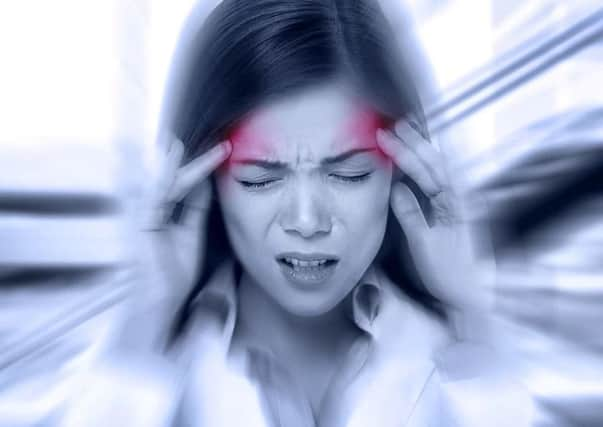New hope for headache sufferers


Cluster headache is described as the most painful medical condition known to mankind - with its pain described by a majority of female sufferers as worse than childbirth.
A new fast track clinic has now opened its doors to sufferers who currently face long waits for their next appointment with a consultant, despite the start of an attack or worsening symptoms.
Advertisement
Hide AdAdvertisement
Hide AdInstead, the clinic at Guy’s and St Thomas’s hospital in London, will see them within a week, after referral from their family doctor and offer treatment intended to get their cluster headache under control.
Dr Giorgio Lambru, headache neurologist in the headache centre at Guy’s and St Thomas’s hospital, said: “There is an urgent need to significantly improve cluster headache care.
“We are adopting a new clinical approach, with a patient-initiated clinic, and we hope to foster collaboration at all levels of care, so we can manage this devastating condition better.”
The opening coincides with the first-ever awareness day on the condition, which affects four in 1,000 people and is as prevalent as multiple sclerosis and Parkinson’s disease.
Advertisement
Hide AdAdvertisement
Hide AdThe day is staged by OUCH (UK), the Organisation for the Understanding of Cluster Headache, a member and partner of the European Headache Alliance, and the European Headache Federation.
The clinic follows close liaison between OUCH (UK), sufferers, supporters and the pain management centre at the hospital.
Scott Bruce, a trustee of OUCH (UK), said: “As an episodic sufferer, being able to quickly and effectively seek assistance from specialist medical help is vital for good management of a condition that impacts greatly on my quality of life.
“As a trustee, who assists well over 2,000 individual sufferers in Britain, this service will mean so much to every single one of them and their families”.
Advertisement
Hide AdAdvertisement
Hide AdThe word “cluster” refers to a period of time, lasting weeks or months, during which attacks come on a daily basis.
An increased number of patients also suffer with seasonal changes and during light hours in the day, peaking at the equinox.
People experience acute, sharp pain, usually behind the eye, together with other facial symptoms, such as a running or blocked nose, streaming eye and facial swelling.
Attacks, as many as eight a day, last up to three hours.
Though most patients may have a remission period for a few months, without attacks, about 20 per cent face a chronic pattern of attacks, without any significant remission.
Advertisement
Hide AdAdvertisement
Hide AdWhile no specific medication has yet been developed for the condition, a number of techniques and treatments can ease the pain and help people through their bout of attacks.
But the biggest issue for patients is obtaining a correct diagnosis and timely access to a headache specialist.
Dr Anna Andreou, research director of the headache centre, said: “The ultimate cluster headache treatment is yet to be found.
“However, a number of interventions, delivered in a timely fashion, can help to provide relief for such a devastating condition.”